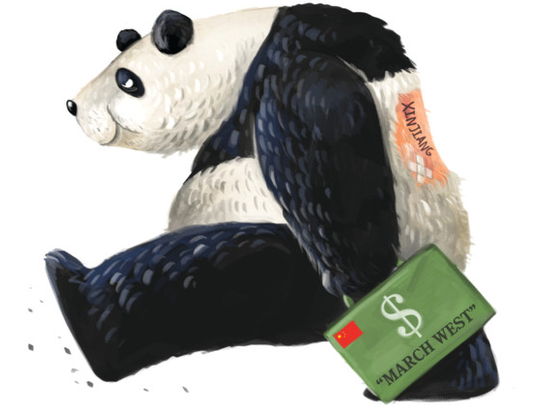
The growing bloodshed in Iraq and Syria is being watched as keenly in China as anywhere else in the world. Indeed, the greater Middle East is becoming an ever greater focus of Chinese foreign policy.
At the just-concluded sixth ministerial conference of the China-Arab States Cooperation Forum, held in Beijing, Chinese President Xi Jinping called upon his Arab counterparts to upgrade their strategic relationships with China, by deepening bilateral cooperation in areas ranging from finance and energy to space technology. This reflects China’s broader goal — established partly in response to America’s “pivot” toward Asia — of rebalancing its strategic focus westward, with an emphasis on the Arab world.
Of course, economic ties between China and the Arab countries have been growing stronger for more than a decade, with the trade volume increasing from $25.5 billion (Dh93.78 billion) in 2004 to $238.9 billion in 2013. China is now the Arab world’s second-largest trading partner and the largest trading partner for nine Arab countries. Within ten years, the volume of China-Arab trade is expected to reach $600 billion. Engineering contracts and investment have also enhanced ties.
Under Xi’s leadership, China is attempting to reshape its relationships with Arab countries according to its new “march west” strategic framework. The most notable component of this strategy is the “Silk Road economic belt”, which is to run along the ancient Central Asian Silk Road and the modern maritime Silk Road — an initiative that Xi promoted heavily at the recent meeting in Beijing. This effort highlights China’s goal of establishing hub-and-spoke relationships with key developing economies around it. To this end, Prime Minister Li Keqiang has proposed an economic corridor linking China to Pakistan and has spoken of other corridors running through Bangladesh, India and Myanmar.
Unsurprisingly, energy has been a key factor in economic ties with the Arab world. From 2004 to 2013, China’s crude oil imports from Arab countries grew by more than 12 per cent annually, on average, reaching 133 million tonnes per year. And China’s “march west” strategy furthers its goal of safeguarding access to these resources. As the director of the State Council’s Development Research Centre, Li Wei, pointed out in February, that at the current rate, China will be consuming 800 million tonnes of oil annually and importing 75 per cent of its petroleum, by 2030.
In this sense, China’s trajectory contrasts sharply with that of the US, where the rapid growth in output of shale oil and gas, together with energy-saving measures, has brought energy independence closer than ever — a point that US President Barack Obama emphasised in his most recent State of the Union address. In fact, according to the US Energy Information Administration, China surpassed the US as the world’s largest net oil importer earlier this year.
Moreover, the US is gradually disengaging strategically from the greater Middle East, creating a vacuum that China seeks to fill. To succeed, China will need to become more attentive to the region’s complex dynamics; find creative ways to participate in conflict-resolution efforts and respond enthusiastically to Middle Eastern governments’ growing desire to connect to Asia.
Doing so will enable China’s leaders to advance their goal of developing the country’s vast inland regions. Specifically, western provinces like Ningxia and Qinghai, which have substantial Muslim communities, could benefit from deeper links with Arab economies.
Enhanced influence in the Arab world will also promote the perception of China as a leader of the developing world — a position that can boost China’s strategic and economic resilience considerably. For starters, it will enable China to capitalise on the demographic heft of the developing world, which will house more than 80 per cent of the world’s population in 2020. Moreover, it will allow China to maximise its gains from burgeoning trade among developing economies, which surged from 8 per cent of global trade in 1990 to 24 per cent in 2011.
To be sure, not all Arab governments are welcoming China with open arms. Indeed, many of the Middle East’s most powerful actors — including Turkey and Saudi Arabia — are suspicious of China’s long-term intentions. However, China can take steps to gain these countries’ trust. For example, China’s leaders should work to address the unrest in the Muslim-dominated province of Xinjiang more effectively.
Clearly, China’s rising clout is no longer confined to Asia. China’s “march west” into the Arab world is a bold effort to translate its economic might into enduring regional — and, ultimately, global — influence. This is a daunting task, but it is one that can not only help to secure China’s long-term future, but perhaps bring greater weight to bear in resolving the region’s immense challenges.
— Project Syndicate, 2014
Minghao Zhao, a research fellow at the Charhar Institute, a Chinese foreign-policy think tank, is also an adjunct fellow with the Centre for International and Strategic Studies at Peking University and the executive editor of China International Strategy Review.










